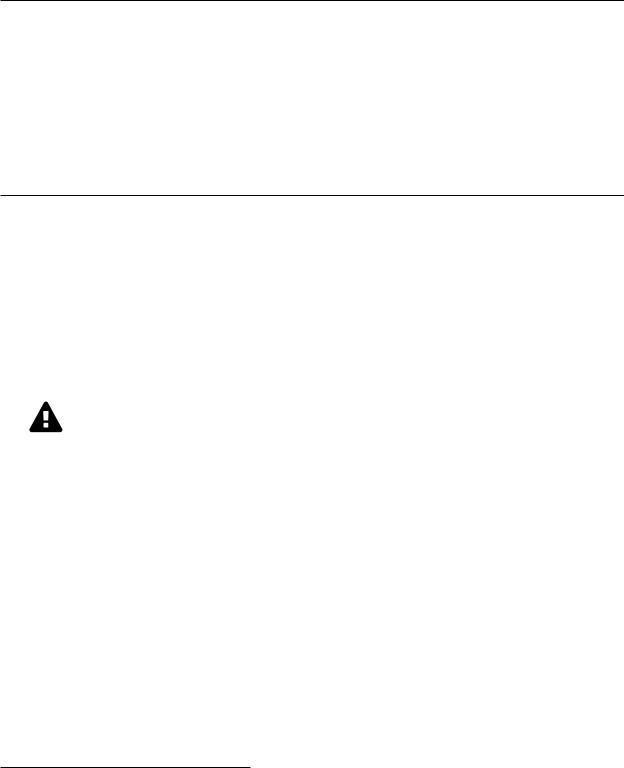
- •Foreword from Derick Bailey
- •Cover Credits
- •Who This Book is For
- •Following Along with Git
- •Jumping in for Advanced Readers
- •Setting Up
- •Asset Organization
- •Getting Our Assets
- •Displaying a Static View
- •Dynamically Specifying a View Template
- •Specifying Other View Attributes
- •Implementing Region Management
- •Displaying a Model
- •Using Model Defaults
- •Introducing Events
- •Exercise
- •Displaying a Collection of Models
- •Introducing the CollectionView
- •Listing our Contacts with a CollectionView
- •Sorting a Collection
- •Exercise
- •Chapters not in Sample
- •Implementing Routing
- •How to Think About Routing
- •Adding a Router to ContactsApp
- •Routing Helpers
- •DRYing up Routing with Events
- •Adding a Show Route
- •Exercise
- •Chapters not in Sample
- •About this Sample

Implementing Routing |
38 |
What about pushState?
Backbone allows you to leverage HTML5’s pushState ¹ functionality by changing your history starting code to Backbone.history.start({pushState: true}); (see documentation ²).
When using pushState, URL fragments look like the usual “/contacts/3” instead of “#contacts/3”. This allows you to serve an enhanced, javascript-heavy version of the page to users with javascript-enabled browsers, while serving the basic HTML experience to clients without javascript (e.g. search engine crawlers). Be aware, however, that to use pushState in your application your server has to respond to that URL. This is a frequent error when trying out pushState.
You’re free to have your server systematically respond with your index.html page regardless of the requested URL, but something needs to be sent to the client when the URL is requested (e.g. when loading a bookmark). When sending index.html to all client requests, you’re bascially delegating the URL resolution to your Marionette app: when the browser will load index.html, the app will start along with the route-handling code, which will load the correct application state (since the route corresponding to the URL requested by the client will get triggered).
Another strategy is to progressively enhance your application, as Derick Bailey introduced in a blog post ³.
A great resource to read up on HTML5’s History API is Dive Into HTML5 , and the links provided in its “Further Reading” paragraph at the end.
Routing Helpers
Here’s what we want to do: if the user comes to our app at the root URL, let’s redirect him to “#contacts”. The basic way of accomplishing this would be:
¹http://www.whatwg.org/specs/web-apps/current-work/multipage/history.html#history²http://backbonejs.org/#History-start
³http://lostechies.com/derickbailey/2011/09/26/seo-and-accessibility-with-html5-pushstate-part-1-introducing-pushstate/http://diveintohtml5.info/history.html

Implementing Routing |
39 |
Redirecting to the root URL (assets/js/app.js)
1ContactManager.on("start", function(){
2if(Backbone.history){
3 Backbone.history.start();
4
5if(Backbone.history.fragment === ""){
6Backbone.history.navigate("contacts");
7ContactManager.ContactsApp.List.Controller.listContacts();
8}
9 }
10 });
On line 5, we check the URL fragment (i.e. the string that comes after “index.html” in the URL, ignoring the “#” character): if it’s empty, we need to redirect the user. Except that in javascript web apps, “redirecting” is a bit of a misnomer: we’re not redirecting anything (as we would be with a server), we are just
•updating the URL with the proper fragment (line 6)
•executing the proper controller action (line 7), which will display the desired views
You can achieve the same result by putting Backbone.history.navigate("contacts", {trigger: true}); on line 6, and removing line 7. You will sometimes see this done in various places on the web, but it encourages bad app design and it is strongly
recommended you don’t pass trigger:true to Backbone.history.navigate. Derick Bailey (Marionette’s creator) even wrote a blog post on the subject.
Triggering routes to execute desired behavior is a natural reflex when you’re coming from typical stateless web development, because that’s how it works: the user hits a URL endpoint, and the corresponding actions are performed. And although triggering the route looks better at first glance (less code), it will expose you to design problems: if you’re unable to get your app to behave as expected using controller methods, you’ve got issues that should be addressed. Keeping the {trigger: false} default when navigating will encourage the proper separation of app behavior and URL management, as discussed above.
Note that navigate doesn’t just change the URL fragment, it also adds the new URL to the browser’s history. This, in turn, makes the browser’s “back” and “forward” buttons behave as expected.
Let’s get back to our code and refactor: checking the current URL fragment and keeping it up to date are things we’ll be doing quite frequently as we develop our app. Let’s extract them into functions attached to our app:
http://lostechies.com/derickbailey/2011/08/28/dont-execute-a-backbone-js-route-handler-from-your-code/

|
Implementing Routing |
40 |
|
Redirecting to the root URL (assets/js/app.js) |
|
|
|
|
1 |
var ContactManager = new Marionette.Application(); |
|
2 |
|
|
3 |
ContactManager.navigate = function(route, options){ |
|
4options || (options = {});
5Backbone.history.navigate(route, options);
6 |
}; |
7 |
|
8 |
ContactManager.getCurrentRoute = function(){ |
9 |
return Backbone.history.fragment |
10 |
}; |
11 |
|
12ContactManager.on("before:start", function(){
13// setup region container (edited for brevity)
14});
15
16ContactManager.on("start", function(){
17if(Backbone.history){
18Backbone.history.start();
19
20if(this.getCurrentRoute() === ""){
21this.navigate("contacts");
22ContactManager.ContactsApp.List.Controller.listContacts();
23}
24}
25});
We’ve simply declared helper functions on lines 3 and 8, and we then use them on lines 20-21. Note that line 4 essentially sets options to {} if none are provided (i.e. it sets a default value).
If you think about it, these helper functions aren’t really specific to our application: they’re closer to extensions of the Marionette framework. For simplicity’s sake, we’ve kept the code above in the main app, but refer to the Extending Marionette chapter to see how this can be accomplished to clean up our code further.
DRYing up Routing with Events
Right now, our app is manually changing the URL and calling a controller action if the URL contains no fragement. But that isn’t very DRY : we’ll end up setting route fragements and calling controller
http://en.wikipedia.org/wiki/Don%27t_repeat_yourself

Implementing Routing |
41 |
methods everywhere, and it will be a nightmare to maintain. Instead, let’s leverage events (line 6):
Triggering an event in assets/js/app.js
1ContactManager.on("start", function(){
2if(Backbone.history){
3 |
Backbone.history.start(); |
4 |
|
5if(this.getCurrentRoute() === ""){
6ContactManager.trigger("contacts:list");
7}
8 }
9});
Then, we update the URL fragement and call the appropriate action within our controller by listening for that same event (lines 15-18):
Responding to the navigation event in assets/js/apps/contacts/contacts_app.js
1 ContactManager.module("ContactsApp", function(ContactsApp, ContactManager,
2Backbone, Marionette, $, _){
3ContactsApp.Router = Marionette.AppRouter.extend({
4appRoutes: {
5"contacts": "listContacts"
6}
7 |
}); |
8 |
|
9var API = {
10listContacts: function(){
11ContactsApp.List.Controller.listContacts();
12}
13};
14
15ContactManager.on("contacts:list", function(){
16ContactManager.navigate("contacts");
17API.listContacts();
18});
19
20ContactsApp.on("start", function(){
21new ContactsApp.Router({
22controller: API
23});
